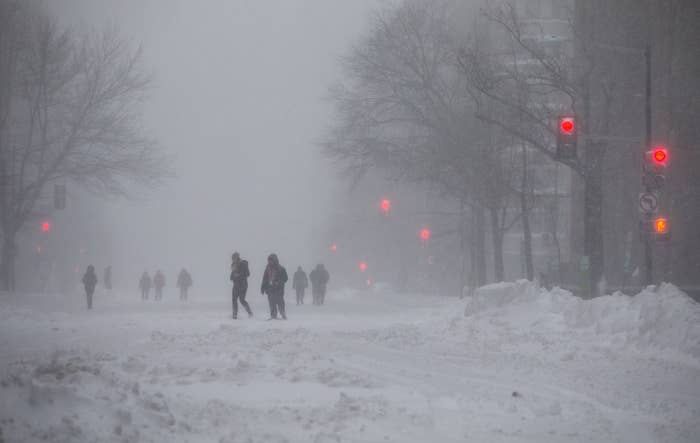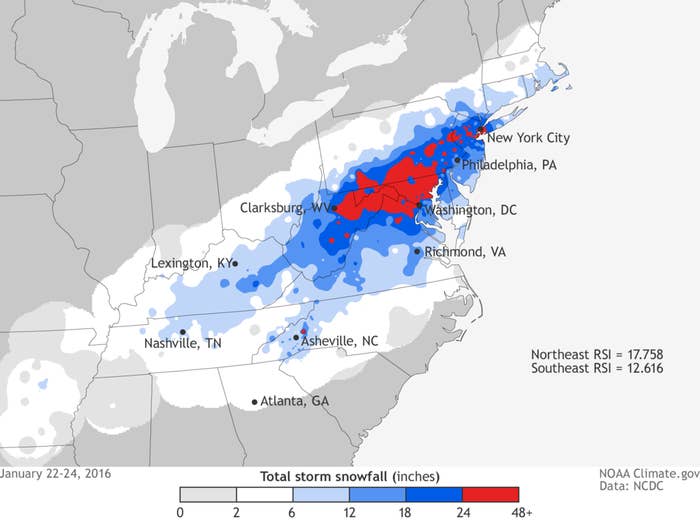
The blizzard that swept through the eastern U.S. over the weekend was the sixth worst on record for the Northeast and the seventh worst for the Southeast, U.S. weather researchers said Tuesday.
The Jan. 22-24 storm brought cities across the Mid-Atlantic to a halt, triggered emergency declarations, and left at least 45 people dead.
According to the National Centers for Environmental Information, roughly 21 million Northeastern residents saw 20 inches of snow, and about 5.6 million people in the Southeast experienced over 10 inches of snow.
The storm earned a "crippling" category four rating in the northeast and southeast on the regional snowfall index's five-tier scale.
Rankings are based on the amount of snowfall in a region, the area covered by the storm, and how people in a region are affected. Though this week's storm was not the largest in size, it hit some of the most heavily populated areas of both regions.

Based on scientists' analysis, the storm was the sixth worst out of 199 Northeastern storms recorded since 1900. In the Southeast, it was the seventh worst out of 153 storms since 1900.
In the South, the snow hit residents particularly hard.
"Around 3.4 million people in the region saw over 15 inches of snow—in [regional snowfall index] terms, 15 inches in the Southeast is equivalent to 30 inches or more in the Northeast," the researchers said.
In the Northeast, the worst storm on record remains the February 1969 blizzard that affected 59 million people.
In the Southeast, the strongest storm was the January 1996 snowstorm that affected 31 million.
